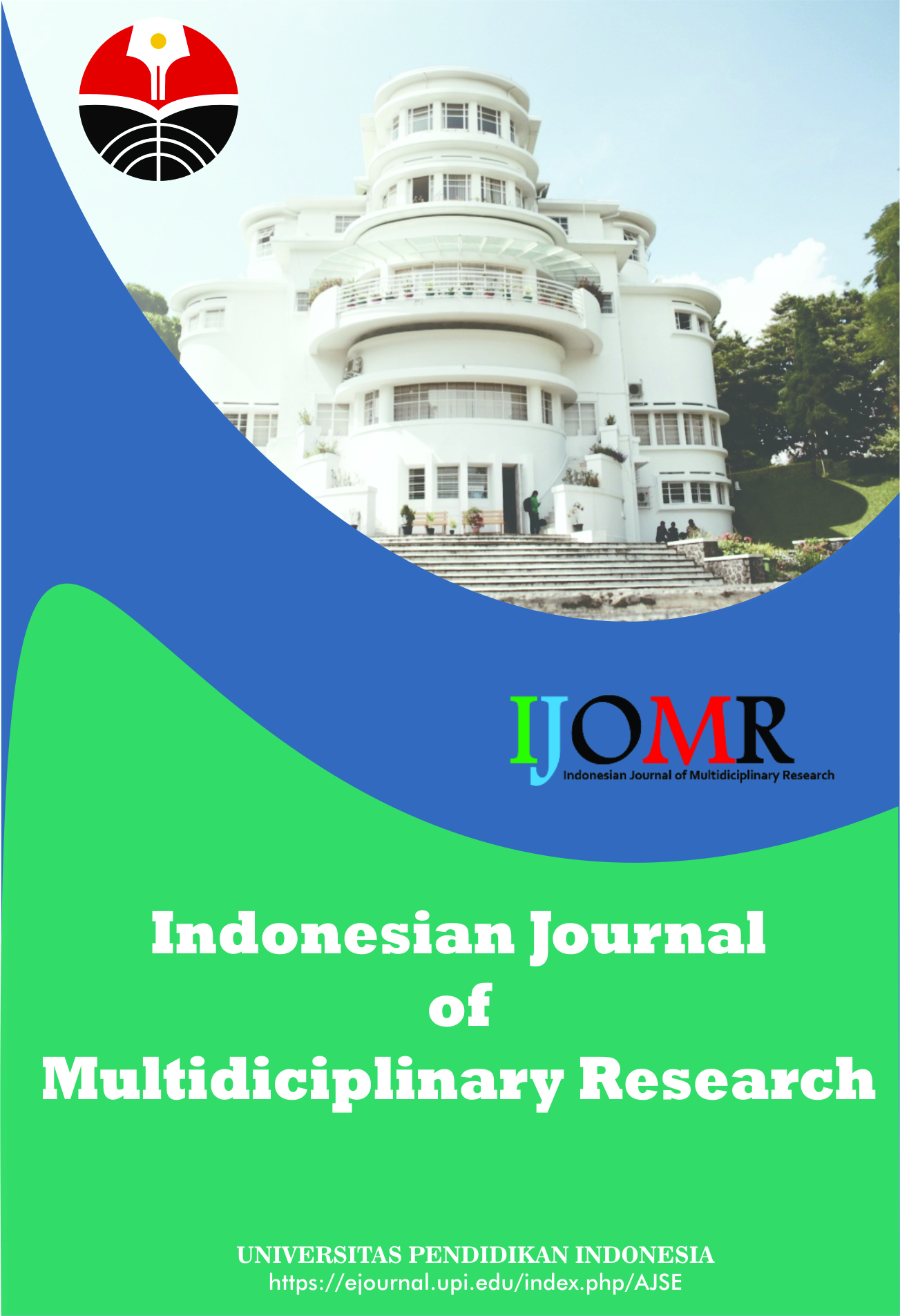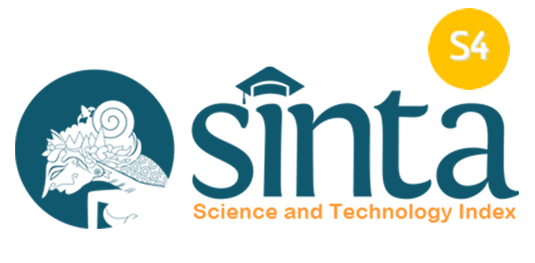How to Identify Misconception Using Certainty of Response Index (CRI): A Study Case of Mathematical Chemistry Subject by Experimental Demonstration of Adsorption
Abstract
The purpose of this study was to identify misconceptions using the certainty of response in undergraduate students through a case study of mathematical chemistry subject by experimental demonstration of adsorption. The concept of mathematical chemistry was conveyed to students by using an explanation video. The video also directs students to do practical experiments on adsorption. The data obtained can be used to determine the isotherm adsorption model that fits with their experimental phenomena. Students analyze the data obtained by using their understanding of the mathematical chemistry concepts that have been taught. Misconceptions on students were analyzed using pretest-posttest by giving 20 questions followed by the guess level (CRI). Based on the answers given, students' understanding of the concepts being taught can be identified as understanding the concept, lucky guess, do not understand the concept, and misconceptions. This research can be used as a reference to identify misconceptions in students and can be applied in various subjects.
Keywords
Full Text:
PDFReferences
Ash, S. L., Clayton, P. H., and Atkinson, M. P. (2005). Integrating reflection and assessment to capture and improve student learning. Michigan Journal of Community Service Learning, 11(2), 49-60.
Bal-Taştan, S., Davoudi, S. M. M., Masalimova, A. R., Bersanov, A. S., Kurbanov, R. A., Boiarchuk, A. V., and Pavlushin, A. A. (2018). The impacts of teacher’s efficacy and motivation on student’s academic achievement in science education among secondary and high school students. Eurasia Journal of Mathematics, Science and Technology Education, 14(6), 2353-2366.
Beaty, R. E., and Silvia, P. J. (2013). Metaphorically speaking: Cognitive abilities and the production of figurative language. Memory and Cognition, 41(2), 255-267.
Bowen, S. A. (2003). I thought it would be more glamorous’: Preconceptions and misconceptions among students in the public relations principles course. Public Relations Review, 29(2), 199-214.
Caleon, I., and Subramaniam, R. (2010). Development and application of a three‐tier diagnostic test to assess secondary students understanding of waves. International Journal of Science Education, 32(7), 939-961.
Cetin-Dindar, A., and Geban, O. (2011). Development of a three-tier test to assess high school students understanding of acids and bases. Procedia-Social and Behavioral Sciences, 15(2011), 600-604.
Chen, S. M. 2009. Shadows: Young Taiwanese children’s views and understanding. International Journal of Science Education, 31 (1), 59–79.
Gurel, D. K., Eryılmaz, A., and McDermott, L. C. (2015). A review and comparison of diagnostic instruments to identify students misconceptions in science. Eurasia Journal of Mathematics, Science and Technology Education, 11(5), 989-1008.
Hammer, D. (1996). More than misconceptions: Multiple perspectives on student knowledge and reasoning, and an appropriate role for education research. American Journal of Physics, 64(10), 1316-1325.
Kılıç, D., and Sağlam, N. (2009). Development of a two-tier diagnostic test to determine students understanding of concepts in genetics. Eurasian Journal of Educational Research, 36(2009), 227-244.
Liu, O. L., Lee, H. S., and Linn, M. C. (2011). An investigation of explanation multiple-choice items in science assessment. Educational Assessment, 16(3), 164-184.
Luxford, C. J., and Bretz, S. L. (2014). Development of the bonding representations inventory to identify student misconceptions about covalent and ionic bonding representations. Journal of Chemical Education, 91(3), 312-320.
Maharani, L., Rahayu, D. I., Amaliah, E., Rahayu, R., and Saregar, A. (2019). Diagnostic test with four-tier in physics learning: Case of misconception in newton’s law material. In Journal of Physics: Conference Series, 1155(1), 012022.
Malek-Ahmadi, M., Small, B. J., and Raj, A. (2011). The diagnostic value of controlled oral word association test-FAS and category fluency in single-domain amnestic mild cognitive impairment. Dementia and Geriatric Cognitive Disorders, 32(4), 235-240.
Mustari, M., Anggereni, S., and Yusandika, A. D. (2020). Identification of students misconceptions using the certainty of response index (CRI) from work and energy material. In Journal of Physics: Conference Series, 1572(1), 012-038.
Pashler, H., McDaniel, M., Rohrer, D., and Bjork, R. (2008). Learning styles: Concepts and evidence. Psychological Science in the Public Interest, 9(3), 105-119.
Tuysuz, C. (2009). Development of two-tier diagnostic instrument and assess students understanding in chemistry. Scientific Research and Essay, 4(6), 626-631.
Widarti, H. R., Permanasari, A., and Mulyani, S. (2016). Student misconception on redox titration (a challenge on the course implementation through cognitive dissonance based on the multiple representations). Jurnal Pendidikan IPA Indonesia, 5(1), 56-62.
Widarti, H., Permanasari, A., and Mulyani, S. (2017). Undergraduate students misconception on acid-base and argentometric titrations: A challenge to complement multiple representation learning model with cognitive dissonance strategy. International Journal of Education, 9(2), 105-112.
Yuliani, K., and Saragih, S. (2015). The development of learning devices based guided discovery model to improve understanding concept and critical thinking mathematically ability of students at islamic junior high school of Medan. Journal of Education and Practice, 6(24), 116-128.
DOI: https://doi.org/10.17509/ijomr.v2i1.38738
Refbacks
- There are currently no refbacks.
Copyright (c) 1970 Kantor Jurnal dan Publikasi, Universitas Pendidikan Indonesia (UPI)

This work is licensed under a Creative Commons Attribution-ShareAlike 4.0 International License.
Indonesian Journal of Multidiciplinary Research (IJOMR) is published by Universitas Pendidikan Indonesia (UPI)















